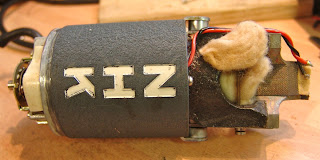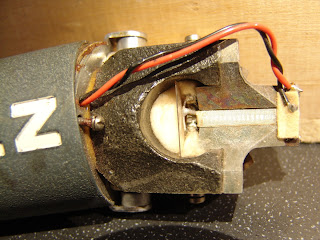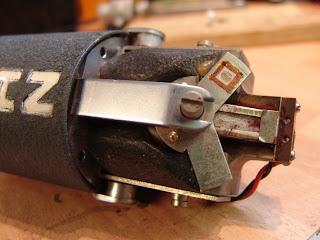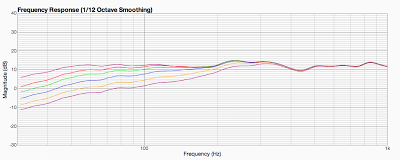 |
| Toshiba Model K |
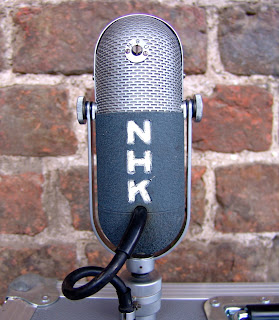 |
| Rear of the model K, with pattern control |
Inside the mic, the motor is based around a single strong horseshoe magnet, with the ribbon held between two chunky pole pieces.
Like the RCA 77DX, there is an acoustic labyrinth made from a series of holes with connecting channels, which goes up and down the centre of the mic. Two thick wires take the signal from the ribbon, through the labyrinth, down to the transformer below.
 |
| Acoustic labyrinth in the middle of the mic |
The pattern control uses a choice of baffles to partly or entirely redirect the rear of the ribbon into the acoustic labyrinth. This turns the mic into a pressure transducer when the rear baffle is closed, giving a more omnidirection pattern.
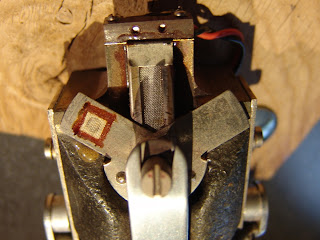 |
| Pattern control on the Toshiba type G. |
It differs from the RCA design: the 77DX has a a cam shaped copper plate that allows the rear vent to be opened by incremental amounts, whereas the Toshiba has three discrete positions, which are labelled…
- N (fully closed – non-directional)
- B (fully open – bidirectional or figure 8), and
- U (a small opening – unidirectional or cardioid)
And in an attempt to beat the Americans, on the bottom of the mic there is a switch for a 6 position variable frequency high pass filter – the RCA77DX only has three!
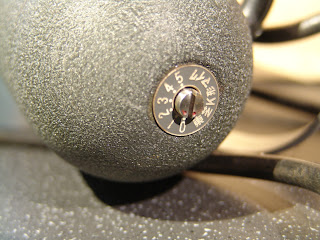 |
| High pass filter switch |
